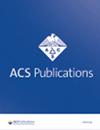Studying the Factors Affecting De-Emulsification of Crude Oil
引用次数: 0
Abstract
The paper deals with highly stable emulsions. It is concentrated on de-emulsification of crude oil. In the petroleum industry, de-emulsification is an important and urgent task that is typically required for the treatment of crude oil. This work, suggests method using coupling device integrated centrifuge with chemical to strengthen the de-emulsification efficiency. A number of de-emulsification runs were conducted to determine how centrifuge and chemical components affected the effectiveness of de-emulsifying crude oil and the separation of water, Different types of de-emulsifiers the (ethylene glycol, choline chloride and ethyl cellulose), were used with different concentration of de-emulsifiers, de-emulsification time in centrifuge and centrifugal speed. Also studied at the same time. Studies on the de-emulsification of crude oil were conducted at room temperature. As the concentration of de-emulsifiers was increased, crude oil's de-emulsification efficiency rose , centrifuge time and centrifugal speed ,with de-emulsifier type effect on de- emulsification ,which reached maximum (85.9%,84.4% and 74.07%) at rate 4% of ethylene glycol, choline chloride and ethyl cellulose respectively ,at 60 min and 4000 rpm . This method provides higher water separation from crude oil emulsion and quicker method.原油脱乳化影响因素的研究
本文研究的是高度稳定的乳剂。主要研究原油的脱乳化。在石油工业中,除乳剂是一项重要而紧迫的任务,通常需要对原油进行处理。本文提出了采用耦合装置将离心机与化工设备集成在一起来提高脱乳效率的方法。采用不同类型的脱乳化剂(乙二醇、氯化胆碱和乙基纤维素),在不同的脱乳化剂浓度、离心脱乳剂时间和离心转速下进行了脱乳剂试验,确定了离心机和化学成分对原油脱乳剂效果和水分离效果的影响。同时也在学习。在室温条件下对原油进行了脱乳研究。随着脱乳化剂浓度的增加,原油的脱乳化效率、离心时间和离心转速均有所提高,脱乳化剂类型对原油脱乳化效果的影响最大,分别在乙二醇、氯化胆碱和乙基纤维素质量分数为4%、60 min和4000 rpm时达到最大,分别为85.9%、84.4%和74.07%。该方法对原油乳化液的水分离效果好,速度快。
本文章由计算机程序翻译,如有差异,请以英文原文为准。
求助全文
约1分钟内获得全文
求助全文

 求助内容:
求助内容: 应助结果提醒方式:
应助结果提醒方式:


